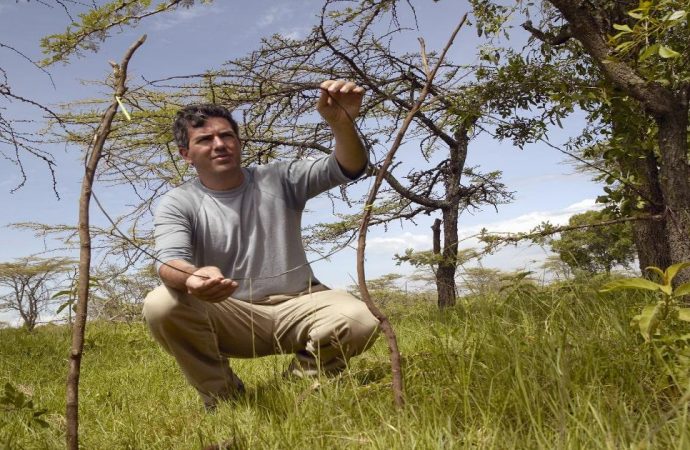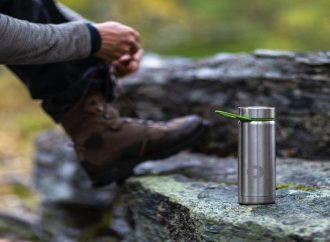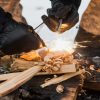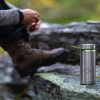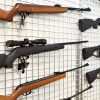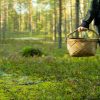Both the British countryside and cities are home to an array of different animals, many of which can be a source of food to preppers when trapping for survival becomes the norm. Although it is currently illegal to trap some of these animals in the UK, this is likely to no longer be the case
Both the British countryside and cities are home to an array of different animals, many of which can be a source of food to preppers when trapping for survival becomes the norm.
Although it is currently illegal to trap some of these animals in the UK, this is likely to no longer be the case when trapping for survival after a major SHTF event which affects the nation and the world.
This article will explore the different kinds of land animals that you can trap in the UK for survival food, as well as tips on how to do it.
Squirrel
Grey squirrels are considered a pest in the UK and so work is carried out across the country to keep numbers down. They also provide a source of protein and can be caught with the use of a snare trap.
This can be done by looping a piece of wire and placing it up in a tree where squirrels are likely to be found.
The loop should be attached to a branch on the tree, so that when the squirrel walks through it, the loop will tighten and trap the animal there until you return.
Due to the nature of this type of snare, you can set up as many as you like in the tree with the aim of catching more than one squirrel. If you decide to use bait to help this process, peanut butter is always a good bet to draw them along that branch.
Squirrels can also be caught with a wooden rat trap nailed to a tree with something like peanut butter smeared on the trip.
Game Birds
There are a significant number of game birds in the United Kingdom such as pheasants, ducks and geese. These provide a very desirable source of meat and an ideal target for hunting or trapping for survival after SHTF as well in these better times.
It is possible to trap pheasants using snares, especially if you can lay them in an area where the plants and surrounding area will help to disguise them. Preppers can also group these snare traps together to increase the chances of catching one, or perhaps more than one if numbers permit.
A better way is to actually create some sort of cage that will trap them inside. Check out this video to see exactly how that can be done.
Deer
Deer are abundant in the UK but are rarely seen. When it comes to catching them, they are better hunted in a traditional way rather than trapped, but if you want to catch one you can use a variety of methods.
You can play the waiting game and use the drop net method where a net of rope designed for deer is dropped from a supporting frame onto the unsuspecting deer.
They can be caught in a large snare too which is probably not the best way as they will likely struggle and fight until you come back for them, and cannot easily slip into a snare in the same way as a rabbit does.
The final way is with a homemade clover trap, basically a giant cage that has a self-locking mechanism which trips when the deer reaches the back of the cage.
Rabbits
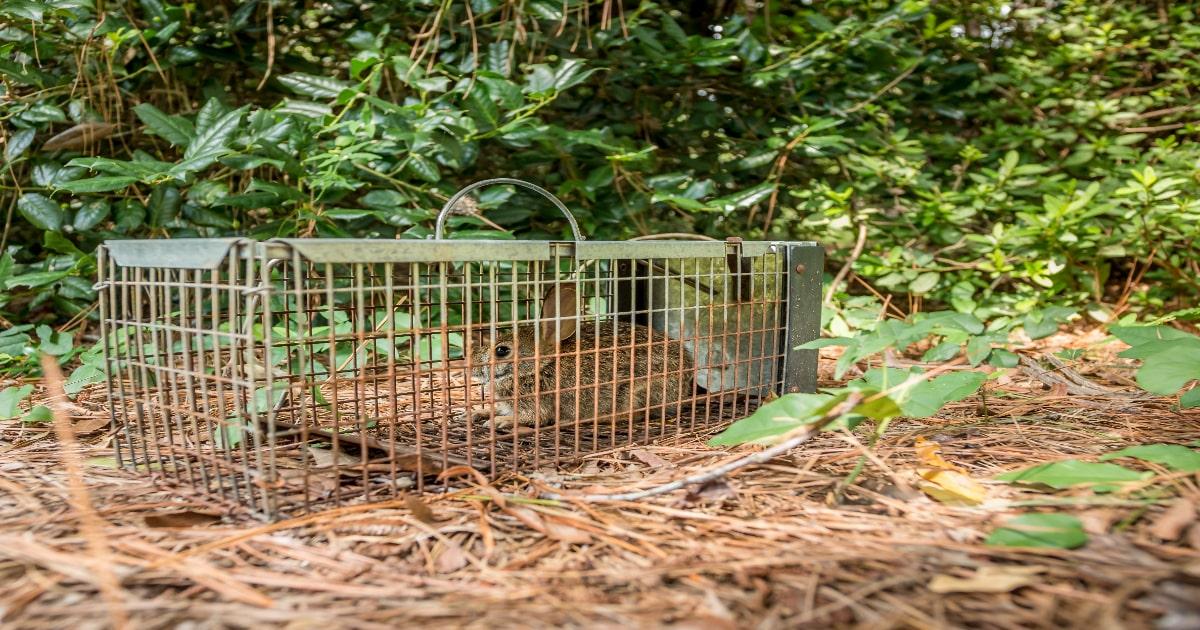
The UK countryside is home to an abundance of wild rabbits and hares. Due to the large numbers of rabbits across the country, they are a good animal to aim to trap when looking for a healthy source of protein.
The best way to trap a rabbit is by using a snare trap, as these can be easily hidden in the grass areas around their warrens.
When setting up a homemade snare trap for a rabbit it is important to make sure that the material you use is strong as rabbits are likely to try and chew through it if they find it.
A good type of material to use to prevent this from happening is a strong wire.
Pigeons
Pigeon traps can be purchased as a specially designed metal cage which does the work for you, or made with a homemade design to help you trap pigeons. These are typically a small wire cage with a door. The idea is that the pigeon enters the cage after being lured in by some bait (corn is ideal for this) and then the door can be closed.
In fact, after you have caught one pigeon, it is likely that other pigeons will try to join them so it’s worth keeping the door open after the first one has entered to allow this to happen.
As pigeons are more typically found in cities and towns in the UK, preppers who are living by the cities rather than in forests may find this a suitable way in which to find a source of food trapping for survival purposes.
Also, as it possible to catch more than one in this way, they may choose to keep some to breed to help establish a more reliable supply for the future.
If you haven’t prepared traps in advance of SHFT, then propping up a washing basket with a stick tied to a string is a method that will work too. Scatter bread around the trap and under it, then pull the string from a distance to trap it. There are also netted snap traps available which can humanely catch birds.
Badger
As badgers are quite a large animal, they can provide any prepper or group or preppers with a decent supply of meat so are well worth trapping in a survival setting. However, badgers are known to carry bovine tuberculosis and there’s no way of telling.
A good way to trap them would be by using a snare, as it will use the weight of the animal against them and trigger the trap as they walk past.
Make sure you set the snare up in an area where the badger is likely to walk past, such as the entrance to their set, but remember that badgers are sizeable animals and would need an extra durable snare.
A more humane way of catching them alive would be to use a large cage trap with some bait set at the back.
Beaver
Cage traps can also be used to catch beavers, but bear in mind they have only been recently introduced back to Britain and are extremely rare, with only 400 thought to be here.
It’s probably best not to eat them back into extinction, but if you have seen them around and need sustenance when SHTF and your life depends on it, here’s how to catch one when trapping for survival purposes.
Due to the lengths of beavers, it is advisable to use a large cage that is at least 42 inches long, as this provides enough space for the beaver’s long torso and tail.
It is also important to make sure that the wire is at least 2mm thick to provide a secure place to keep the beaver until you can return to the trap.
As well as having the right cage, it is important to consider placement. As beavers are typically found near water, the cage should be placed near a source of water where you believe there to be beavers nearby.
To encourage them to enter the cage, bait should be placed behind the door to draw the animal in. When it does enter, this will activate the trap and ensure the door closes behind them. Twigs and branches are a good source of bait for beavers, particularly poplar.
Otter
Similar to beavers, otters can be found in areas of water where sea meets fresh, but mainly in Scotland. A good way to trap them in this setting is by using a trap in the water.
This can be done by digging a hole into the banking to make it look like the entrance to a den, perhaps belonging to a beaver.
Next, set down the trap in the hole, ensuring it is secured in the ground beneath so that it does not move. Finally, place some bait to lure the otter in. Fish is ideal for this.
Summary
It is apparent that there is a wide variety of animals that can be trapped in the UK as a source of food, fur or just for pest control.
Some preppers may think it’s cruel to catch and kill animals in this way just now, when Asda 24/7 is open as normal and you can just nip to McDonalds for a burger.
However, when you have to look your starving family in the eyes weeks after the food supply chain has collapsed, you will kick yourself for not having prepared properly in this way for their food supply.
Although trapping some of these animals is illegal, this will not be the case in a survival setting so it is important for preppers to consider how they would trap these animals in the event that it becomes a necessity in the future.
That might mean buying a cage trap that you just store away until needed, or having some ready-made snares tucked into your bug out bag.

